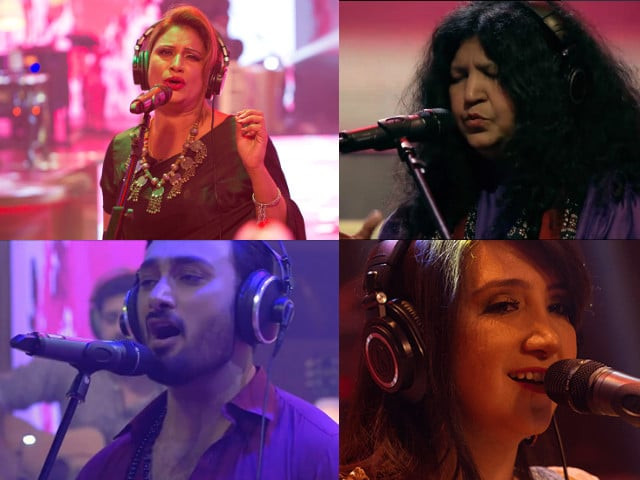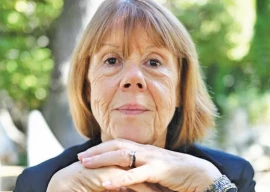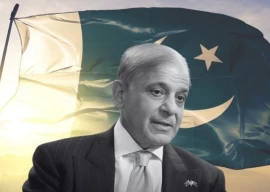
Airing simultaneously on 41 TV channels and eight radio stations, not to forget social media platforms, this is a massive wave that will continue to sweep our mediascape for another month or so.
For Coke Studio, this is the year for its biggest experiment to date - letting many cooks prepare the broth.
The show’s ninth season debuted on Saturday, and it was never burdened with making the day; Younis Khan was already working on that end.
Top 15 Coke Studio songs of all time
Over the last two years, the show had contracted a fixation with the glorious past, a fundamental reason why even the average listener was crying monotony. Historical anchorage can be justified but retromania, not for long.
While it is still too early to generalise this for the whole season, but the episode, to a great extent, does away with this obsession. Perhaps inclusivity has done the trick.
Before we get to the thick of what’s on offer, another observation needs to be made. For music directors, six is a big number. Each of these individuals, or duo in the case of Noori, brings something different to the table.
Coke Studio's Independence Day special will leave you in tears
The way Rohail Hyatt compartmentalised releases according to themes in the earlier seasons, we were anticipating that each music director will see the release of their full episode at once, so that the listener can exactly understand what they have attempted to communicate through their creative choices. This, however, has not happened and only time will tell what was the better decision to make.
For the rather excitable fans, let us make something clear. While it can be debated whether Coke Studio is changing the game or not, it is certainly not a revolution. It is packaged for popular consumption and most of the faces you see on it, are there for, as Faraz Anwar puts it, the bread and butter. The makers of Coke Studio are not the consumers of Coke Studio.
Revealed: Here's the artist line-up for 'Coke Studio 9'
Having said that, let the old school judge you for overreacting. Frivolity is not always bad.
Sasu Mangay
This Marwari folk track has enough evidence to silence those who question Naseebo Lal’s credentials. Meanwhile, Umair Jaswal has decided to not sing any song without sneaking in a growl or two and has closed doors for debate.
The track opens with a therapeutic hint of Raag Maand and begins its struggle against the cliche of a Bollywood wedding song from the early 2000s. However, the arrangement is smooth and the song ends up as a well done Sammi Meri Waar; an obvious result of a mature Shiraz Uppal treatment.
Janay Na Tu
Ali Khan’s hairstyle is enough to tell where he stands in the Ronaldo vs Messi debate.
Janay Na Tu might have been very extraordinary for the time when Khan first wrote it, for 2016 the melody is quite overdone. Yet, Jaffer Zaidi deserves praise for polishing it to the extent that it triggers the right emotions in you.
This is a perfect arrangement and even the simple things, for instance reliance on acoustic sounds, the basic string orchestra pieces or even the key of the song, add value to this ballad.
It is about time Zaidi specifies what will it take to get Kaavish to start making music, or rather putting out music, once again.
Aaqa
Abida Parveen’s career has defined much of Pakistani music for many. If you dig up her Coke Studio appearances from the Hyatt era, with tracks such as Ramooz-e-Ishq or Soz-e-Ishq she seems to be at her commanding best, which both enthralls and intimidates.
In the Strings era she has been part of four songs (three of which are collaborations) and you want to ask questions about each, especially about Chaap Tilak. Considering her influence and stature, it will not be wrong to say that the first three went unnoticed.
What seems to be the case is the inadequate utilisation of her presence. Parveen does not need company to make a hymn continue to sound fresh for eight odd minutes. There has to be a reason why her group has never had another vocalist, no humnawa, no baazu.
It is a strange thing to say but these releases only hint at the factually incorrect judgment that she might just be past the best of what she can offer.
Her fourth track, Aaqa, is a reworking of the age-old famous naat. Hearing Shuja Haider’s treatment made us realise how big of an artist the late Khursheed Ahmed was.
Aaqa is a lyrical mishmash and you drag yourself to the last second only because you respect Parveen. The wisdom behind adding verses from Waqas Siddiqui and Salman Azmi is beyond comprehension.
In a TV interview that came after the airing of Coke Studio 8, Ali Sethi had made it known that Umran Langiyaan was not his choice and the song did show that despite trying his best, Sethi could not do justice. Aaqa again takes him out of his comfort zone but this time you cannot blame him.
Parveen ranks among the best we have ever produced and matching her scale and control is no easy feat. Sethi still does what was asked of him with remarkable finesse.
Aaja Re Moray Saiyaan
When a flamboyant rock musician teamed up with a reticent younger brother to make music, Noori came to be. This has been the case for them, almost always. Ali Noor has led, Ali Hamza has stabilised. However, with Aaja Re Moray Saiyaan, the siblings took the other route.
The song adds weight to the theory that in popular music, simple lines weaved in cliched metres work wonders. Although a 16-year-old Hamza wrote this, it is standard Noori stuff; basic Urdu, familiar qafiya and radif and a generally uplifting theme. The vocabulary has ample poetic buzzwords to get the average listener thinking.
In Zeb Bangash, we cannot help but locate the Nazia Hasan of Kariye Pyar Diyan Gallan. While it is mandatory to appreciate Bangash’s vocal tone every single time, a khatka here, a murki there, did slip from her hands. Nonetheless, Aaja Re Moray Saiyaan is extremely heartwarming. Also, not to forget, handing a morchang to Shahab Hussain was a great idea.
So here’s what we have gathered from the overall product so far: with the G majors and G minors still in currency, song-making has indeed graduated from recent editions.
The arrangements seem more thought-out, the transitions are seamless, the ornamentation is not excessive and some of the experiments have not gone wrong.
Rating: 3.5/5
Verdict: If Strings are still as involved as they were last season, then this is somewhat a redemption. If they aren’t, then we have diagnosed what was wrong previously.
Have something to add to the story? Share it in the comments below.


















COMMENTS
Comments are moderated and generally will be posted if they are on-topic and not abusive.
For more information, please see our Comments FAQ